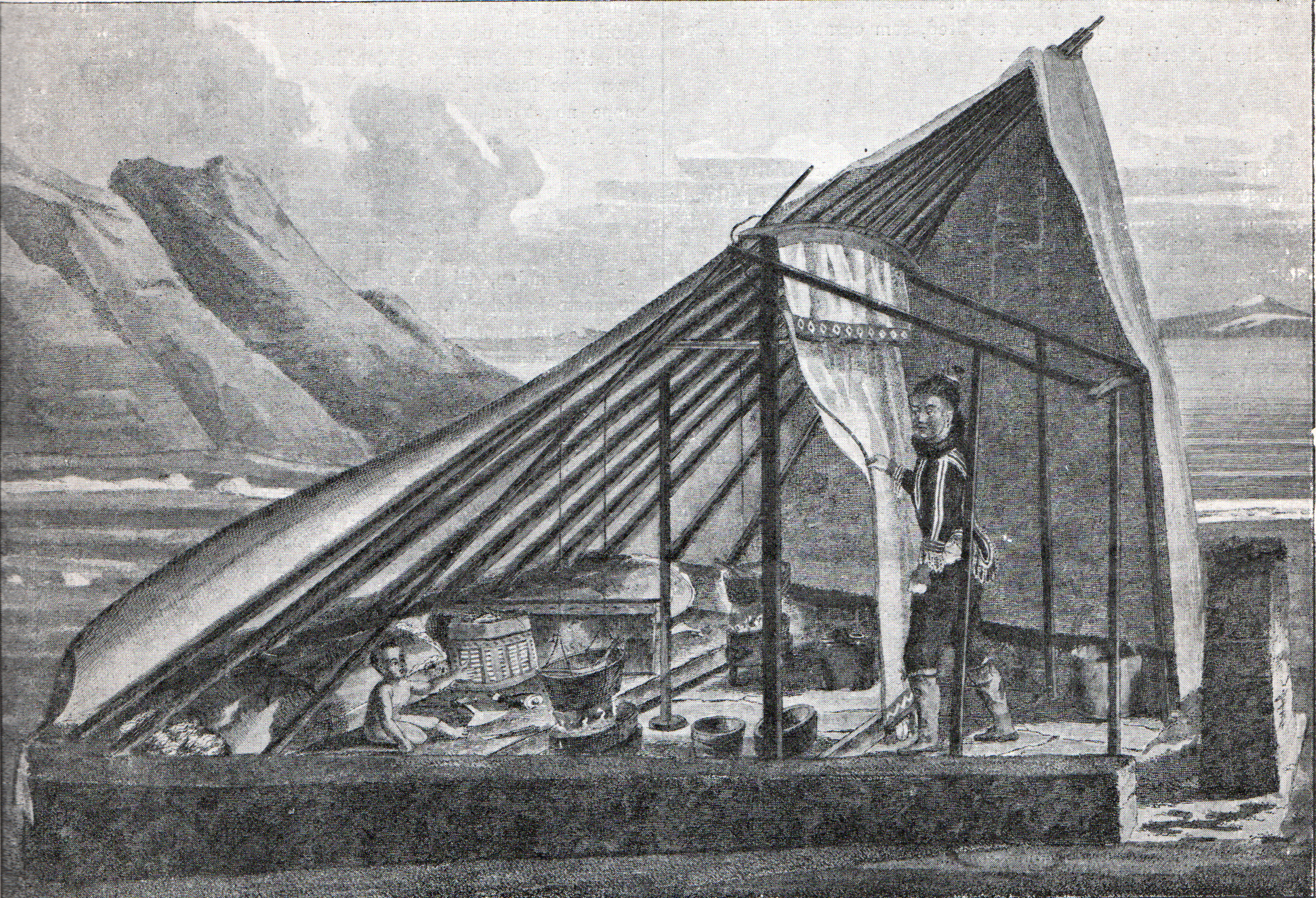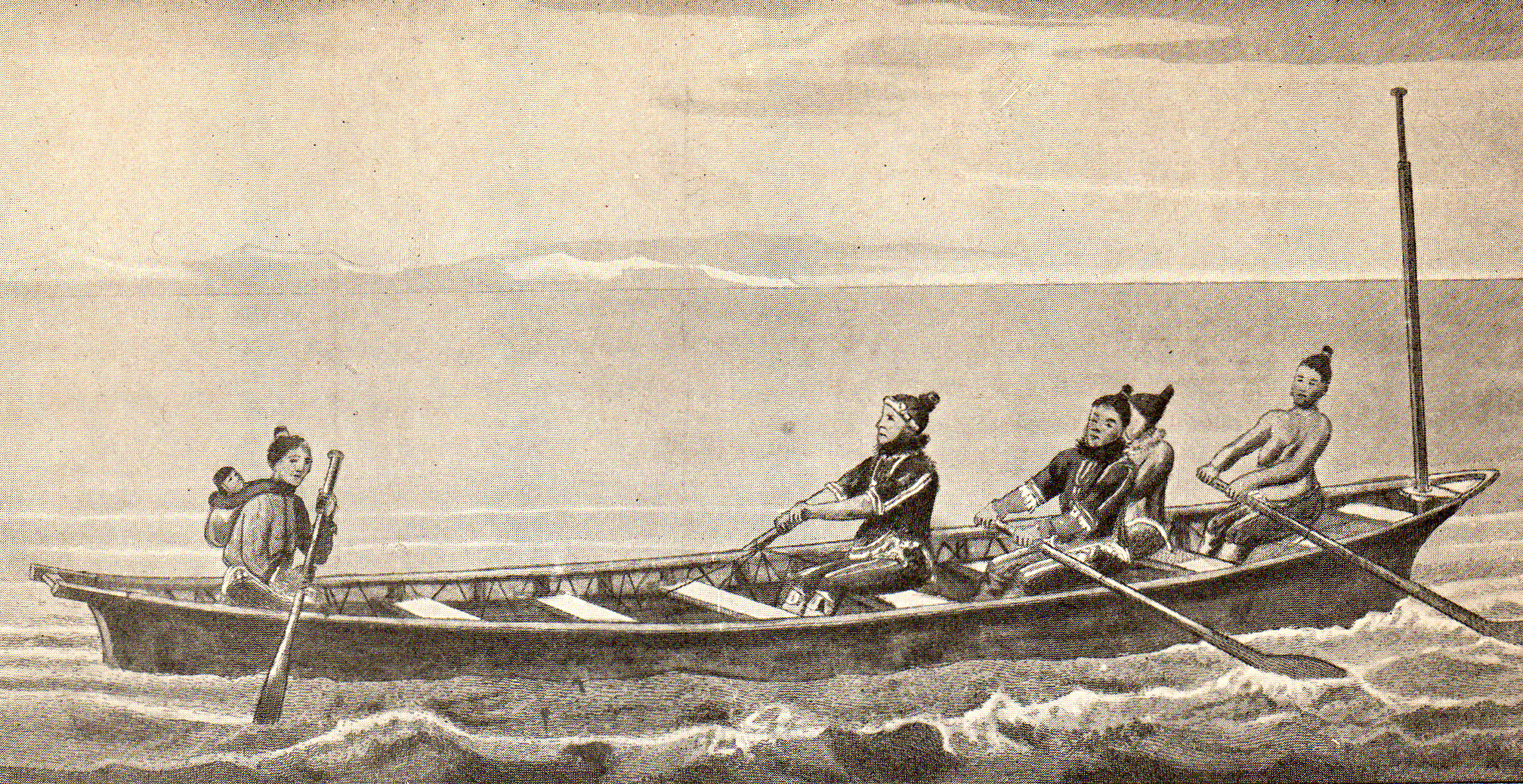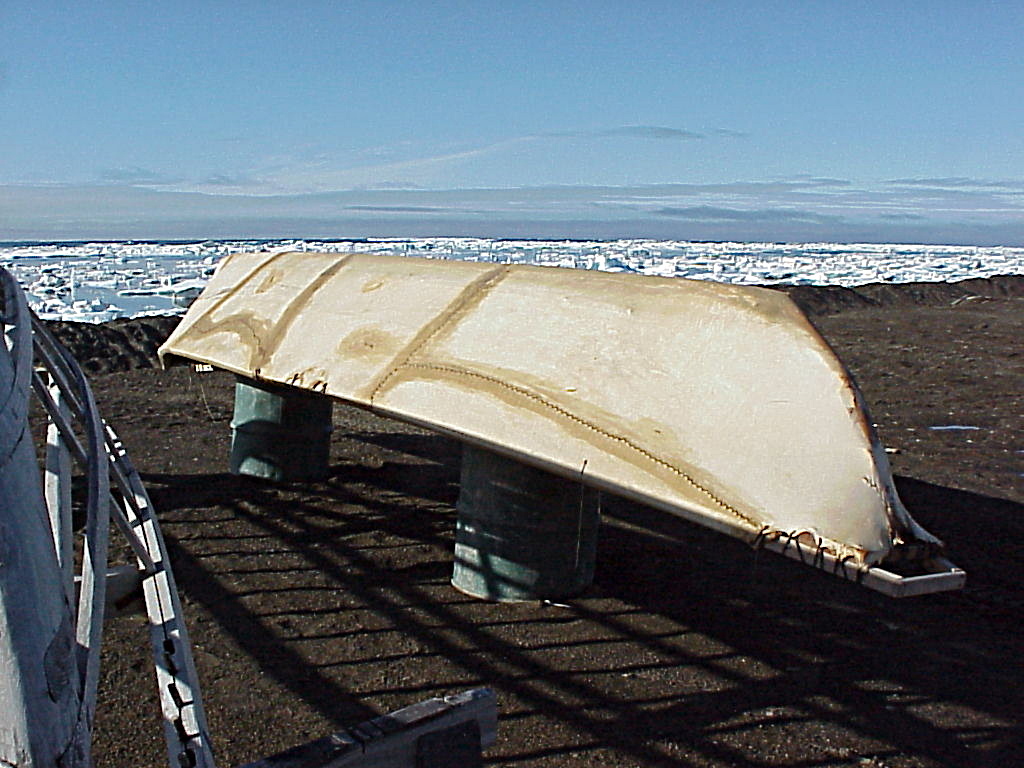|
Cape Walløe
Cape Walløe ( da, Kap Walløe), also known as Kangeq and Kangerssiuasik, is a headland in the North Atlantic Ocean, southeast Greenland, Kujalleq municipality. History Cape Walløe was named in 1829 by Lieutenant Wilhelm August Graah (1793–1863) after Dano-Norwegian Arctic explorer Peder Olsen Walløe (1716 – 1793) who was the first European known with certainty to have explored the southern part of the southeastern coast of Greenland using local umiak boats. This headland was the farthest point that Walløe reached up the then uncharted coast before he had to turn back because he found it impossible to proceed further north owing to the ice. Geography Cape Walløe is located northeast of the mouth of Nattoralik Fjord.''Prostar Sailing Directions 2005 Greenland and Iceland Enroute'', p. 100 The entrance of Kangerluaraq Kangerluaraq, old spelling ''Kangerdluaraq'', is a fjord in the King Frederick VI Coast, Kujalleq municipality, southern Greenland. Geography Kangerluaraq ... [...More Info...] [...Related Items...] OR: [Wikipedia] [Google] [Baidu] |
Cape (geography)
In geography, a cape is a headland or a promontory of large size extending into a body of water, usually the sea.Whittow, John (1984). ''Dictionary of Physical Geography''. London: Penguin, 1984, p. 80. . A cape usually represents a marked change in trend of the Coast, coastline, often making them important landmarks in sea navigation. This also makes them prone to natural forms of erosion, mainly tidal actions, which results in them having a relatively short geological lifespan. Capes can be formed by glaciers, volcanoes, and changes in sea level. Erosion plays a large role in each of these methods of formation. List of some well-known capes Gallery File:Cape Cornwall.jpg, Cape Cornwall, England File:Nasa photo cape fear.jpg, Satellite image of Cape Fear, North Carolina File:Cape McLear, Malawi (2499273862).jpg, Cape MacLear, Malawi File:Cape horn.png, Map depicting Cape Horn at the southernmost portion of South America File:Spain.Santander.Cabo.Mayor.jpeg, Photograph o ... [...More Info...] [...Related Items...] OR: [Wikipedia] [Google] [Baidu] |
King Frederick VI Coast
King Frederick VI Coast ( da, Kong Frederik VI Kyst) is a major geographic division of Greenland. It comprises the coastal area of Southeastern Greenland in Sermersooq and Kujalleq municipalities fronting the Irminger Sea of the North Atlantic Ocean. It is bordered by King Christian IX Land on the north and the Greenland Ice Sheet to the west. Named after King Frederick VI of Denmark-Norway, the coast stretches for about south of the Arctic Circle. It is characterized by a succession of short fjords, steep mountains and small coastal islands. There is a narrow belt of ice-free land between the shore and the Inland ice cap, interrupted by active glaciers reaching the shore with the ice limit varying seasonally from year to year. Owing to the movement of pack ice carried by the East Greenland Current and frequent gale-force winds that sweep down from the Greenland ice cap, it is mostly very difficult to approach or navigate along the coast by ship. History This area was inhabite ... [...More Info...] [...Related Items...] OR: [Wikipedia] [Google] [Baidu] |
North Atlantic Ocean
The Atlantic Ocean is the second-largest of the world's five oceans, with an area of about . It covers approximately 20% of Earth's surface and about 29% of its water surface area. It is known to separate the "Old World" of Africa, Europe and Asia from the "New World" of the Americas in the European perception of the World. The Atlantic Ocean occupies an elongated, S-shaped basin extending longitudinally between Europe and Africa to the east, and North and South America to the west. As one component of the interconnected World Ocean, it is connected in the north to the Arctic Ocean, to the Pacific Ocean in the southwest, the Indian Ocean in the southeast, and the Southern Ocean in the south (other definitions describe the Atlantic as extending southward to Antarctica). The Atlantic Ocean is divided in two parts, by the Equatorial Counter Current, with the North(ern) Atlantic Ocean and the South(ern) Atlantic Ocean split at about 8°N. Scientific explorations of the Atlant ... [...More Info...] [...Related Items...] OR: [Wikipedia] [Google] [Baidu] |
Arctic
The Arctic ( or ) is a polar regions of Earth, polar region located at the northernmost part of Earth. The Arctic consists of the Arctic Ocean, adjacent seas, and parts of Canada (Yukon, Northwest Territories, Nunavut), Danish Realm (Greenland), Finland, Iceland, Norway, Russia (Murmansk Oblast, Murmansk, Siberia, Nenets Autonomous Okrug, Nenets Okrug, Novaya Zemlya), Sweden and the United States (Alaska). Land within the Arctic region has seasonally varying snow and sea ice, ice cover, with predominantly treeless permafrost (permanently frozen underground ice) containing tundra. Arctic seas contain seasonal sea ice in many places. The Arctic region is a unique area among Earth's ecosystems. The cultures in the region and the Arctic indigenous peoples have adapted to its cold and extreme conditions. Life in the Arctic includes zooplankton and phytoplankton, fish and marine mammals, birds, land animals, plants and human societies. Arctic land is bordered by the subarctic. De ... [...More Info...] [...Related Items...] OR: [Wikipedia] [Google] [Baidu] |
Greenland
Greenland ( kl, Kalaallit Nunaat, ; da, Grønland, ) is an island country in North America that is part of the Kingdom of Denmark. It is located between the Arctic and Atlantic oceans, east of the Canadian Arctic Archipelago. Greenland is the world's largest island. It is one of three constituent countries that form the Kingdom of Denmark, along with Denmark and the Faroe Islands; the citizens of these countries are all citizens of Denmark and the European Union. Greenland's capital is Nuuk. Though a part of the continent of North America, Greenland has been politically and culturally associated with Europe (specifically Norway and Denmark, the colonial powers) for more than a millennium, beginning in 986.The Fate of Greenland's Vikings , by Dale Mackenzie Brown, ''Archaeological Institute of America'', ... [...More Info...] [...Related Items...] OR: [Wikipedia] [Google] [Baidu] |
Kujalleq
Kujalleq ( Greenlandic: , da, Den Syden, lit=The South) is a municipality on the southern tip of Greenland, operational from 1 January 2009. The administrative center of the municipality is in Qaqortoq (formerly called Julianehåb). Creation The municipality consists of the former municipalities of southern Greenland, each named after the biggest settlement: * Nanortalik Municipality * Narsaq Municipality * Qaqortoq Municipality In addition to the area of these municipalities, uninhabited parts of the former municipalities of Paamiut and Ammassalik were added to the new administrative entity. In the case of Paamiut Municipality, it was exclusively a part of the ice sheet including a few nunataks, while in the case of Ammassalik Municipality, it included the coast from the fjord Kangerlussuatsiaq (in Danish ''Lindenow Fjord'') on the old border with Nanortalik Municipality in the south to north of Timmiarmiut. Coat of arms The coat of arms of the municipality depicts a ram's h ... [...More Info...] [...Related Items...] OR: [Wikipedia] [Google] [Baidu] |
Municipalities Of Greenland
Greenland is divided into five municipalities Avannaata, Kujalleq, Qeqertalik, Qeqqata, and SermersooqStatistics Greenland''Greenland in Figures, 2014''/ref> as well as the large Northeast Greenland National Park which is unincorporated. The Thule Air Base is administered by the United States Air Force and operates as an unincorporated enclave surrounded by territory of Avannaata. Municipalities History Greenland was originally divided between the two colonies of North Greenland with its capital at Qeqertarsuaq (formerly Godhavn) and South Greenland with its capital at Nuuk (formerly Godthaab). These were directed by inspectors until 1924, when the officials were promoted to governors. The colonies were united in 1940 and the administration centralized at Godthaab. In 1953 a new Danish constitution promoted Greenland to full membership in the Danish state with all of its inhabitants given Danish citizenship. Divisions and national park For statistical and some regula ... [...More Info...] [...Related Items...] OR: [Wikipedia] [Google] [Baidu] |
Wilhelm August Graah
Wilhelm August Graah (1793–1863) was a Danish naval officer and Arctic explorer. Graah had mapped areas of West Greenland when he, in 1828–30, was sent by King Frederick VI of Denmark on an expedition to the unmapped eastern coast with the purpose to search for the lost Eastern Norse Settlement. Expedition The expedition set out from Copenhagen in the brig ''Hvalfisken'', but - once arrived in Greenland - used umiaks able to navigate in the waters between the coast and the sea ice of southeastern Greenland. In 1829, the expedition reached Dannebrog Island (65° 18' N), where it was stopped by ice. They wintered at Nugarlik (63° 22' N) and returned to the settlements on the west coast of Greenland in 1830. Two naturalists participated - the geologist Christian Pingel and the botanist Jens Vahl. Graah published an account of the exploration. Graah named the southeastern coast of Greenland King Frederick VI Coast and mapped about 550 km of formerly uncharted territory. ... [...More Info...] [...Related Items...] OR: [Wikipedia] [Google] [Baidu] |
Norway
Norway, officially the Kingdom of Norway, is a Nordic country in Northern Europe, the mainland territory of which comprises the western and northernmost portion of the Scandinavian Peninsula. The remote Arctic island of Jan Mayen and the archipelago of Svalbard also form part of Norway. Bouvet Island, located in the Subantarctic, is a dependency of Norway; it also lays claims to the Antarctic territories of Peter I Island and Queen Maud Land. The capital and largest city in Norway is Oslo. Norway has a total area of and had a population of 5,425,270 in January 2022. The country shares a long eastern border with Sweden at a length of . It is bordered by Finland and Russia to the northeast and the Skagerrak strait to the south, on the other side of which are Denmark and the United Kingdom. Norway has an extensive coastline, facing the North Atlantic Ocean and the Barents Sea. The maritime influence dominates Norway's climate, with mild lowland temperatures on the se ... [...More Info...] [...Related Items...] OR: [Wikipedia] [Google] [Baidu] |
Arctic Explorer
Arctic exploration is the physical exploration of the Arctic region of the Earth. It refers to the historical period during which mankind has explored the region north of the Arctic Circle. Historical records suggest that humankind have explored the northern extremes since 325 BC, when the ancient Greek sailor Pytheas reached a frozen sea while attempting to find a source of the metal tin. Dangerous oceans and poor weather conditions often fetter explorers attempting to reach polar regions and journeying through these perils by sight, boat, and foot has proven difficult. Ancient history Indo-European Hypothesis A controversial hypothesis, often regarded as pseudohistory, sets the home of the mythical people Hyperboreans in the Arctic. The scientist and author John G. Bennett talked about it in his research paper "The Hyperborean Origin of the Indo-European Culture" (1963). The theory was originally put forth by William F. Warren, the first President of Boston University, in h ... [...More Info...] [...Related Items...] OR: [Wikipedia] [Google] [Baidu] |
Peder Olsen Walløe
Peder Olsen Walløe (1716 – 27 April 1793) was a Dano-Norwegian Arctic explorer most noted for his historic exploration of the former Norse settlements on Greenland. Biography Peder Olsen Walloe was born on the Baltic Sea island of Bornholm. In 1739, he came to Greenland as one of five colonists called by Lutheran missionary Hans Egede. He learned to speak the Kalaallisut language and settled as a trader with permission to operate outside the Godthåb colony. During 1751–53, Walløe explored the southern coasts of Greenland on behalf of the Danish mission. The aim was to locate the lost Eastern Norse Settlement which was commonly believed to be located on the east coast of Greenland. In August 1751, Walloe left Godthaab in a native boat accompanied by two Danish sailors and two Eskimo rowers. The expedition used umiaks able to navigate in the shallow waters between the coast and the sea ice. The first year he reached what became Julianehåb District where he made certain ... [...More Info...] [...Related Items...] OR: [Wikipedia] [Google] [Baidu] |
Umiak
The umiak, umialak, umiaq, umiac, oomiac, oomiak, ongiuk, or anyak is a type of open skin boat, used by both Yupik and Inuit, and was originally found in all coastal areas from Siberia Siberia ( ; rus, Сибирь, r=Sibir', p=sʲɪˈbʲirʲ, a=Ru-Сибирь.ogg) is an extensive geographical region, constituting all of North Asia, from the Ural Mountains in the west to the Pacific Ocean in the east. It has been a part of ... to Greenland. First arising in Thule people, Thule times, it has traditionally been used in summer to move people and possessions to seasonal hunting grounds and for hunting whales and walrus.Umiaks at the Canadian Museum of Civilization Although the umiak was usually propelled by oars (women) or paddles (men), sails—sometimes made from seal intestines—were also used, and in the 20t ... [...More Info...] [...Related Items...] OR: [Wikipedia] [Google] [Baidu] |








